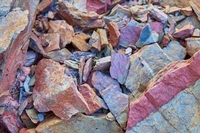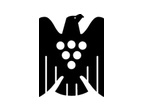I’ve been very lucky in my career to be introduced to some of the most charismatic and interesting people in the wine business. I’ve also met some only through tasting the wines that they have selected for the American market; marking a different way to virtually travel via the taste of wine, through the lens of a single curator.
Among these later introductions, Rudi Weist and Terry Thiese stand tall within the world of German wines. As a young buyer in the industry, Terry’s printed, bound annual tasting catalog was like a spiritual guide to finding poetic nuance in German wine inclusive of Riesling and beyond into Scheurebe, Sekt and more. Rudi, on the other hand, was the first importer in the 1970’s of esteemed estate J.J. Prüm, a family grower in the Mosel valley. The Prüms produce only Riesling wines using native fermentations and a hands-off approach, from sites in Whelen and Grach named Sonnenhur (in English, “Sundial”) and Himmelreich (“Kingdom of Heaven”); manna to a young enthusiast.
This year, in my re-adopted role as a wine buyer for a retail store, I was lucky enough to taste through selections from the companies that carry on the torch of each of these luminaries. The German Wine Collection, based in Carlsbad CA, represents many of the original wineries imported by Rudi Weist. Skurnik Wine & Spirits, based in New

York City, continues to import many of the wines originally selected by Terry Thiese. These wines should be fairly broadly distributed and, as has been the case for decades, German wine continues to offer exceptional value. Moderate prices yield wines with filigree acidity and deep mineral tones, at all levels of sweetness which are enjoyable both young and with bottle age. Most important, as the climate continues to warm, many German wine regions that were previously little known commercially in the US are producing more consistent wines with balanced ripeness from both white and red grapes (German Pinot Noir!).
Germans are famously precise and structured in thought, language, and action. This precision can help consumers pick a wine that they will enjoy, based on the ripeness of the grapes and the level of sweetness of the finished wine. It can also lead down a rabbit-hole into a morass of bewildering terminology. Among the many, many terms you may find on a bottle of German wine, the first could be a term denoting the sugar level of the grapes at harvest, which were codified in law in 1971. In increasing order of sugar, they are:
Kabinett,
Spätlese,
Auslese,
Beerenauslese and
Trockenbeerenauslese. You may find terms denoting dry or off-dry wines with terms including,
Trocken (dry),
Halbtrocken (literally half-dry, with sugar levels up to 18 grams per liter in ratio with acid levels) and finally, the legally undefined
Feinherb which usually denotes a wine with noticeable sweetness and can range in style from delicate to rich.
More recently Germany has revised its wine law to focus on geography and less on ripeness. There is a hierarchy from land-wine, German wine, regional wine, regional wine with pradikatt (minimum level of ripeness and no added sugars) and onto village and single vineyard designated wines. This was predated by the VDP (Verband Deutscher Prädikatsweingüter / Association of German Prädikat Wine

Estates) a grower’s association of 200 wineries naming top sites in previous decades. Their logo is shown here and usually adorns the capsule of wines from member wineries.
According to the VDP, only 0.4% of German wine production comes from sites they have identified as equivalent to Grand Cru with the designations Grosses Gewächs for dry wines and Grosses Lage for off-dry wines. The equivalent for Premier Cru are the designations Erstes Gewächs for dry wines and Erstes Lage for off-dry wines. Sites that are legally recognized with these designations may produce wines only from allowed grape varieties, with a recognition that certain varieties, regions and soils have an affinity for one another as well as historic precedent. As such you may see both red and white wines, from a range of varieties, with these designations. There is an interactive, online map on the VDP website of GG vineyards available here: https://www.vdp.de/en/the-wines/vineyardonline.
If you read through the last paragraphs and were ready to give up on German wines, I’ll urge you to stick with it and keep reading, as there is at least one rule of thumb to streamline your selection process. First, the good news for folks who prefer dry wines is that according to the German Wine Institute, half of wines produced in Germany today are legally dry. The easiest way to determine the sweetness of the finished wine is to look at the alcohol level. Higher levels of alcohol represent more of the grape’s sugar having been converted to alcohol and resulting in a drier wine. So, for two wines of the same ripeness, the one with the higher alcohol level will usually taste drier. Note that even the “sweet” wines often balance a relatively higher level of acid with the residual sugar yielding a fresh-fruit like sensation on the palate rather than a confected or concentrated dessert-like sweetness.
Onto some highlights of recent tastings. Note that I tasted the wines from Skurnik at an afternoon trade event, mid-summer, in the buzz of a crowded room with not nearly enough time to taste all the 108 wines on offer during the 3 hours the tasting was conducted. I tasted the wines from The German Wine Collection more recently with their Sales Manager and Washington DC distributor Forager Imports, in a quiet room, early in the morning. Each of these circumstances can and will impact my impressions of the wines. It has been noted that most taster’s palates are more precise in the morning. My notes from the Skurnik tasting are abbreviated, focusing on two or three aromatic descriptions with a brief note about palate feel and sweetness (or the absence thereof).
After reviewing this article prior to submission and by my own admission a fan of classically sweet wines, I note that I did not include any of those style of wines in my highlights below. All the wines reviewed below are dry:
Braunewell (Rheinhessen, Germany) Pinot Noir Rosé Brut 2021 ($35, Skurnik): This sparkling wine is made following traditional methods, including secondary fermentation in the bottle, by third-generation wine growing brothers Christian and Stefan Braunewell. It offers complex aromas of crushed/macerated ripe strawberry and a lactic, slightly yeasty fresh cream note. While the aromas are inviting, the wine hits another gear on the first sip with driven acidity balanced by just the right dosage that really makes the red fruit character pop on the palate. The finish is slightly minty and cool. Nearly texturally perfect as sparkling wine goes, this wine can compete with some Grower’s Champagnes at around half the price of their French counterparts.
94
Von Winning (Pfalz, Germany) Sauvignon Blanc “II” 2023 ($21, Skurnik): This bright, zesty Sauvignon Blanc combines both cool notes of freshly cut green grass and herbs along with a richer, melon-tinged ripeness. The flavors last and last, leading into an impressively impactful and persistent finish. The textural aspect of this wine elevates it well above the sea of mass market Sauvignon Blanc from any appellation for just a few dollars more per bottle. This wine is made from two sites in Diedesheim, Paradiesgarten ("Paardise Garden") and Herrgottsacker ("Lord God Bless”). I do love German vineyard names.
91
Dautel (Wurttemberg, Germany) Estate Pinot Noir 2022 ($28, Skurnik): Father and son, Ernst and Christian Dautel farm 20 hectares of grapes using biodynamic methods in what seems to me to be the little known region of Wurttemberg, located north of Stuttgart. Christian is making the wines these days and has a wide range of experience, from winemaking education in Germany to production in Oregon, Australia, South Africa, and Austria prior to returning to the family estate. This estate-level Pinot Noir will give any equally priced American Pinot a run for its money. It is made from two sites featuring red sandstone soils and was aged only in large, neutral oak vats, so all of the notes of baking spice and chocolate here come from the grapes themselves. Besides those dark notes there is a deep, rich plum note and a dry, higher acid palate feel which lends a fresh, snappy, driving impression.
93
Karthauserhof (Mosel-Ruwer-Saar, Germany) “Bruno” Dry Riesling 2022 ($27, The German Wine Collection): Fruit for this estate level, non-vineyard-designated wine, is grown on a unique soil (rock pile) made up of bi-color blue and pink slate (pictured above) above the coolest tributary of the Ruwer river, itself one of the tributaries of the Mosel. Super complex layered aromas start with an oceanic blue/green mineral initial sniff followed by zesty orchard fruits, green apples and crisp pear. With some aeration a primary yeasty element comes up with an echo of yellow florals/chamomile and green, sappy softly vegetal notes. The winery has been making wine since 1335 and the wine is named for Bruno of Cologne who was the founder of the Carthusian monastic order. The winery farms organically and is in transition to biodynamic farming.
91
Wagner-Stempel (Rheinhessen, Germany) Weissburgunder 2021 ($24, The German Wine Collection): This wine is made from Weissburgunder fruit (a.k.a. Pinot Blanc or Bianco) that is grown on sandy clay over mother rock of volcanic origin, which imparts a rounder texture to the finished wine. Starting with a panoply of white fruit aromas including pear, white peach, and green-tinged apricot are followed by a sapid, cyanic raw almond note which morphs into caramelized almond croissant-like flavor. In the mouth the wine is only gently fruity and while dry has a more ample, silky texture. I rarely find Pinot Blanc compelling, however this one is well and truly interesting and should work wonders with autumn menus of mushrooms, white fleshed meats, and root veggies.
93
Pfeffingen (Pfalz, Germany) Dry Scheurebe 2022 ($25, The German Wine Collection): First a quick note about the variety, Scheurebe. It was created in 1917 by Dr Gerog Scheu and is a genetic cross of Riseling and an unknown and possibly wild grape. It is a relatively rare variety with worldwide plantings only around 5,000 acres. It is often characterized by notes of black currants, grapefruit and/or elderflower, and can produce both dry and sweet wines. This version from Pfeffingen, a specialist of Scheurebe, is packed with pink-blushed white and green tones recalling white grapefruit, drying, fresh-cut green hay, mint stems, spicy Thai basil, green tea, jasmine and peach blossoms. It is so elegantly proportioned, all I managed to write about the balance of texture and flavor was a single word, “perfect.”
92